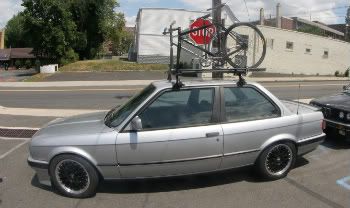I currently have the compressor out of the car. I can't find the friggin leak, yet it leaks out quickly. I am going to convert to r134a. I know I need a new receiver drier and need to pull a vacuum. But, what if any o-rings need to be replaced?
Announcement
Collapse
No announcement yet.
questions regarding conversion to r134a- what o-rings need to be replaced, other ???s
Collapse
X
-
WHAT? Is this true?? I can't even begin to imagine how dangerous that could be.Originally posted by burndup View PostJust slap 'er back together with some new O-rings and charge the system with propane. System will blow unimaginably cold air, and it'll likely never leak again as the propane molecule is much larger than the freon molecule.
Just be real careful not to get in an accident! ;)IG: deniso_nsi Leave me feedback here
Comment
-
Originally posted by burndup View PostNot so much. Google "DuraCool," then google "r-290 refrigerant."
Highly flammable...risky.IG: deniso_nsi Leave me feedback here
Comment
-
There are actually a couple connections under the dash as well... evaporator to expansion valve to lines going through the firewall.Originally posted by Kershaw View Postwhat year is the car?
iirc, late models have r134a compatible o-rings, while early models do not.
the o-rings you'd replace are all in the engine bay.Mtech1 v8 build thread - https://www.r3vlimited.com/board/sho...d.php?t=413205
OEM v8 manual chip or dme - https://www.r3vlimited.com/board/sho....php?p=4938827
Comment
-
No e30 came originally with o-rings or hoses designed for R134a.
Early years often used compressors with Viton seals. Later years tended to use compressors with a cheaper seal material (nitril / n-buna / neoprene). Viton is a better seal material in most respects, but it break down when exposed to R134a. The cheaper materials don't break down just from the chemical exposure, but their age, the increased pressure from R134a and the poor lubrication from PAG/PAO might do them in.
The reason you see the suggestion to change the o-rings isn't because they usually fail. It's because they cost $0.10 each, a small assortment covers most cars, and they are fairly easy to change. The compressor seals are much more expensive and unique to each compressor type, but in our case they very likely need to be replaced. Hoses can cost over $150 each and vary by model year and compressor brand, so you don't usually see a recommendation to change them, but they will often be the source of slow leaks.
Here are my notes on o-ring counts and locations.
O-ring info
The A/C system is built with SAE sized hoses and connections.
BMW lists o-rings by I.D. in mm, vs standard sizes or dimension
Thus a #6 o-ring, which is 3/8" or 9.525mm, is listed by BMW as 7.64mm
O-ring count and locations
7.64mm 4 (liquid hoses at condenser, drier x2, firewall, expansion)
11.1mm 4+1 (hot vapor hose, expansion valve liquid out, press. switch)
14mm 3+1 (EV adjustment vapor hose at expansion valve, firewall)
17mm 1+1 (Bosch compressor inlet and manifold)
Expansion valve and evaporator, 17/19/22/24mm wrenches
One 7.64mm #6
Two 11.1 mm #8 x 1/16" I.D.: 11.1mm O.D: 14.3mm T: 1.6mm
Two 14 mm #10 x 1/16"
(Fifth o-ring is for the superheat adjustment plug)
ETK lists 11.1 and 14mm (602/603) for evap side of exp valve
Compressor
64-50-1-468-464 11.1mm for outlet (see high pressure hose)
Either
64-50-1-468-466, 17mm (19x17mm) (3/4", #12) for Bosch inlet
or
64-50-1-468-465, 14mm (#10) for Denso inlet
Condenser
64-50-1-468-464 11.1mm for inlet (high pressure hose)
64-50-1-468-463 7.64 for outlet (hose to drier), 17/19mm wrenches
Drier
64 50 8 390 601 Two 3/8" (#6) o-ring for tube fittings
64 50 8 390 602 One 1/2" (#8) o-ring for pressure switch
Note: For two pressure switch drier only. Switch with wire leads
is pipe threads, pronged switch is o-ring sealed. New style drier
uses a combined pressure switch with a Schrader valve connection.
Firewall
Liquid connection 17/19mm wrenches
64-50-1-468-463, 7.64mm (3/8", #6)
Vapor 24/27mm wrenches
64-50-1-468-465, 14mm (#10)
O-ring count: 5X #6, 5X #8, 3X #10, 1X #12
64-50-1-468-463, 7.64mm (3/8", #6) new part number for '601
2@ drier, 1@ tube connection, 1@ E.V., 1@ condenser outlet
64-50-1-468-464, 11.1mm (1/2", #8) new part number for '602
1@ drier switch, 2@ E.V., 1@ compressor, 1@ condenser inlet
64-50-1-468-465, 14mm (#10)
2@ E.V., 1@ tube connection, 1@ compressor suction (late compressor)
64-50-1-468-466, 17mm (#12)
1@ E.V., 1@ compressor suction (early compressor), 1@ Bosch manifold
Hoses:
High pressure hose (64-53-8-391-052), compressor to condenser:
Two 64-50-1-468-464 11.1mm
Behr $62.75, German $69.81
64-53-9-067-572 High pressure liquid hose, condenser to drier
64-53-8-391-041 Part number for later cars (improved?)
Uses two 7.64mm (3/8", #6) o-rings
$93.20/$74.56 Behr@rockauto 17.70
Liquid hose, drier to expansion valve:
64-53-1-380-094 metal tube, and 64-53-8-391-047 interior tube
64 50 8 390 601 Two 7.64mm (3/8", #6) o-rings
Metal tube to 9/87 only
Vapor hose, evaporator to compressor
64-53-8-391-048 interior vapor hose
64-53-1-377-821 exterior vapor hose assembly R12
#10 hose, with a #12 connection i.e. a #10-#12 reducing fitting
64-53-8-391-051 exterior vapor hose assembly R134a (really 5/8"?)
64-53-1-380-542 heat exchanger
R12 $109/$86.14
R134 $151/$141.91
Comment
-
DJB - what is this?
64-53-1-380-542 heat exchanger
R12 $109/$86.14
R134 $151/$141.91Mtech1 v8 build thread - https://www.r3vlimited.com/board/sho...d.php?t=413205
OEM v8 manual chip or dme - https://www.r3vlimited.com/board/sho....php?p=4938827
Comment
-
Hi All
This is a great article, thanks to DJB for the most comprehensive description of o-rings required.
Here in Oz, we are still in summer, +100'F days, so I need the a/c working.
Question is: Does an older R12 compressor require any internal mods to work with R134A?
Thanks in advance. Mark
Comment



Comment